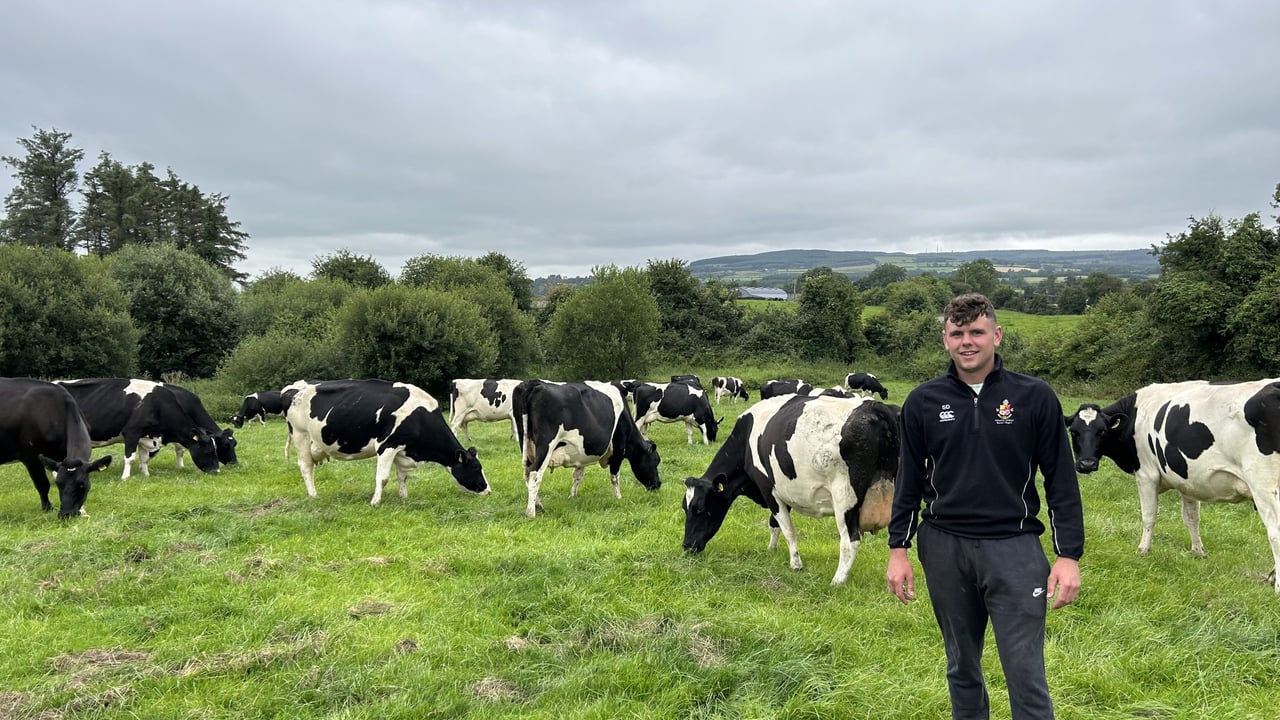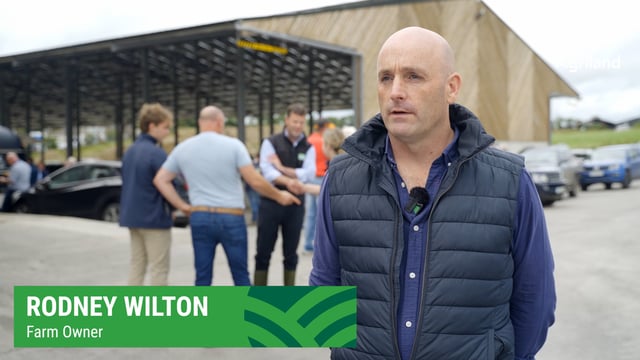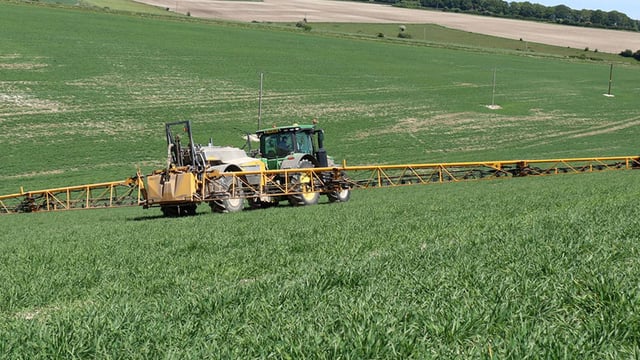Listen: Producing 530kg MS/cow with pure Friesian breeding in Tipperary
Sam Dudley and his father Henry are milking 82 pure British Friesian cows, where the breed seems to be providing milk solids, fertility, hardiness, and longevity.
The father and son duo are milking just outside Templemore, Co. Tipperary operating a spring (80%) and autumn (20%) calving split.
Sam Dudley is in his third year of Agricultural Science in UCC and currently completing his work placement with Dovea Genetics.
Every chance Sam gets, he is out working on the farm and has ambitions to eventually take over the family business and continue with strong lines of genetics in the herd.
Sam's enthusiasm for genetics and breeding, as well as his determination to continue improving the family farm, was evident when he spoke on the latest episode of 'The Dairy Trail' podcast. Click here to listen the podcast.
The pedigree-registered British Friesian herd produced 7,021kg of milk last year with 4.01% fat and 3.54% protein which equates to 528kg of milk solids (MS)/cow through 1.1t/meal per cow, about 700kg of beet-maize/cow and mainly through grazed grass.
Sam can not see himself swaying from the pure Friesian genetics, as he said: "They've worked for my grandfather and my father, so I can't see why she won't work for me."
He admitted that the pure Friesians are good square cows - robust, hardy and last long in the herd, all while having exceptional fertility production without having to push them hard.
"They're a good cow with good solids and cow line is very important.
Sam feels it is hard to fulfil the desired genetics "if you don't have a good cow line behind a bull",
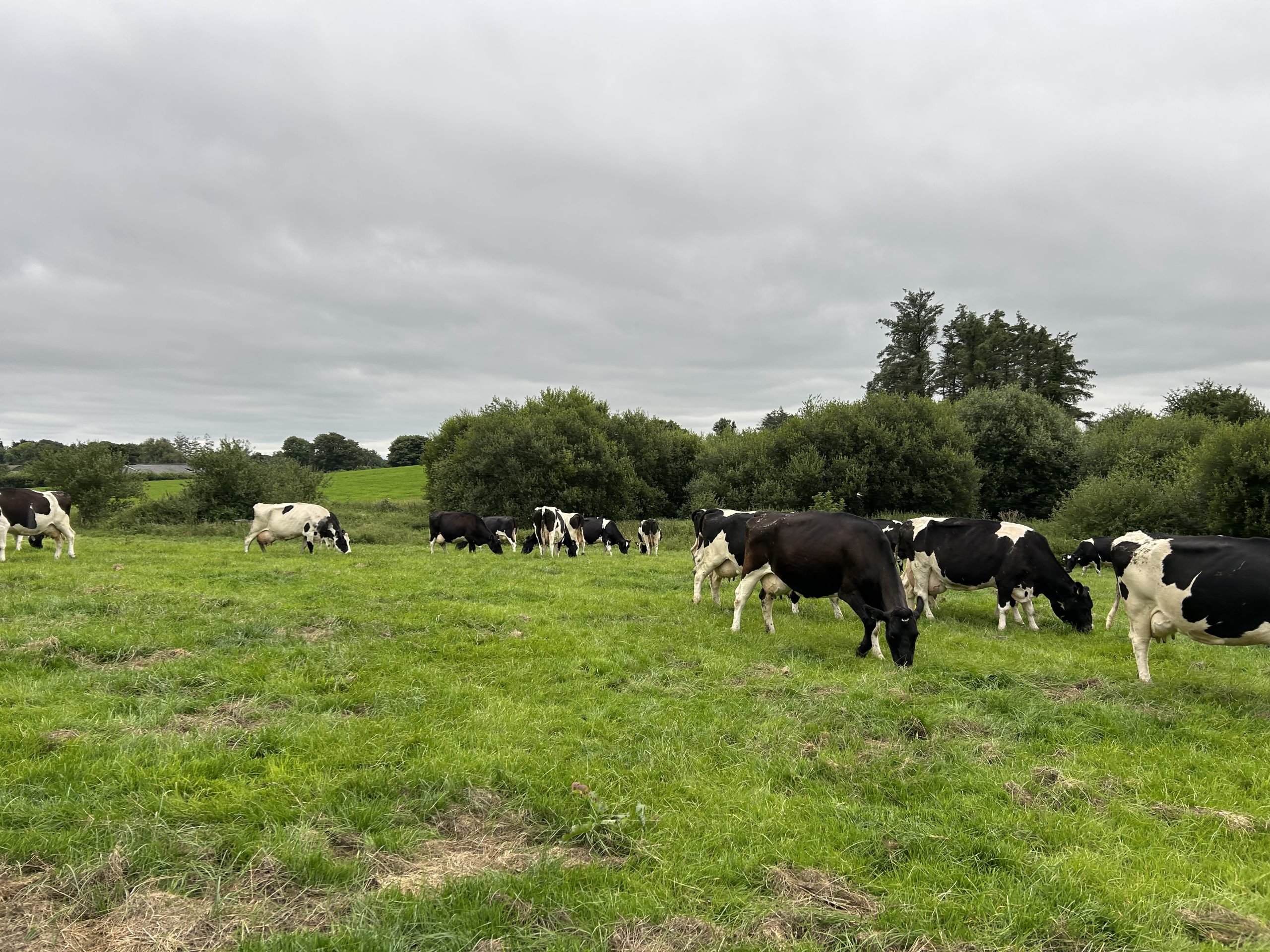
He added: "When you're milking these cows every day, you're seeing them twice a day, every day."
He feels it would be hard to enjoy what he was doing "if you don't like what you're looking at."
For this reason, cow type, cow families, and producing a well-balanced cow is important to Sam, as he also remarked about his cow type producing a hardy, saleable calf.
The calving interval on the farm last year was 355 days. According to Sam, conception rates with the breed are always very good due to the cow's ability to hold condition and turn grass and concentrates into solids and condition.
Traditionally on the farm, the Dudleys used 24 sexed semen Friesian straws and would then follow with an Angus stock bull.
However, this year they have put in Moonsyst heat and health detection boluses, which has significantly helped with pin-pointing artificial insemination (AI) serves.
As Sam said: "it's inside the cow, it can't lie to you".
This has paved the way for more AI and sexed semen serves this year and cut out the stock bull utilisation, with the Dudleys using 40 sexed semen straws this year.
Sam said that they used 30 sexed semen Friesian straws, using Bradash Patriot Red and Bradash Trailblazer.
"The gene pool for pure Frisians is not big and we look for that outcross bull with good fat and protein," he said.
They also used 10 straws of of a high economic breeding index (EBI) bull called Laharn Bruno, who is 31% British Friesian.
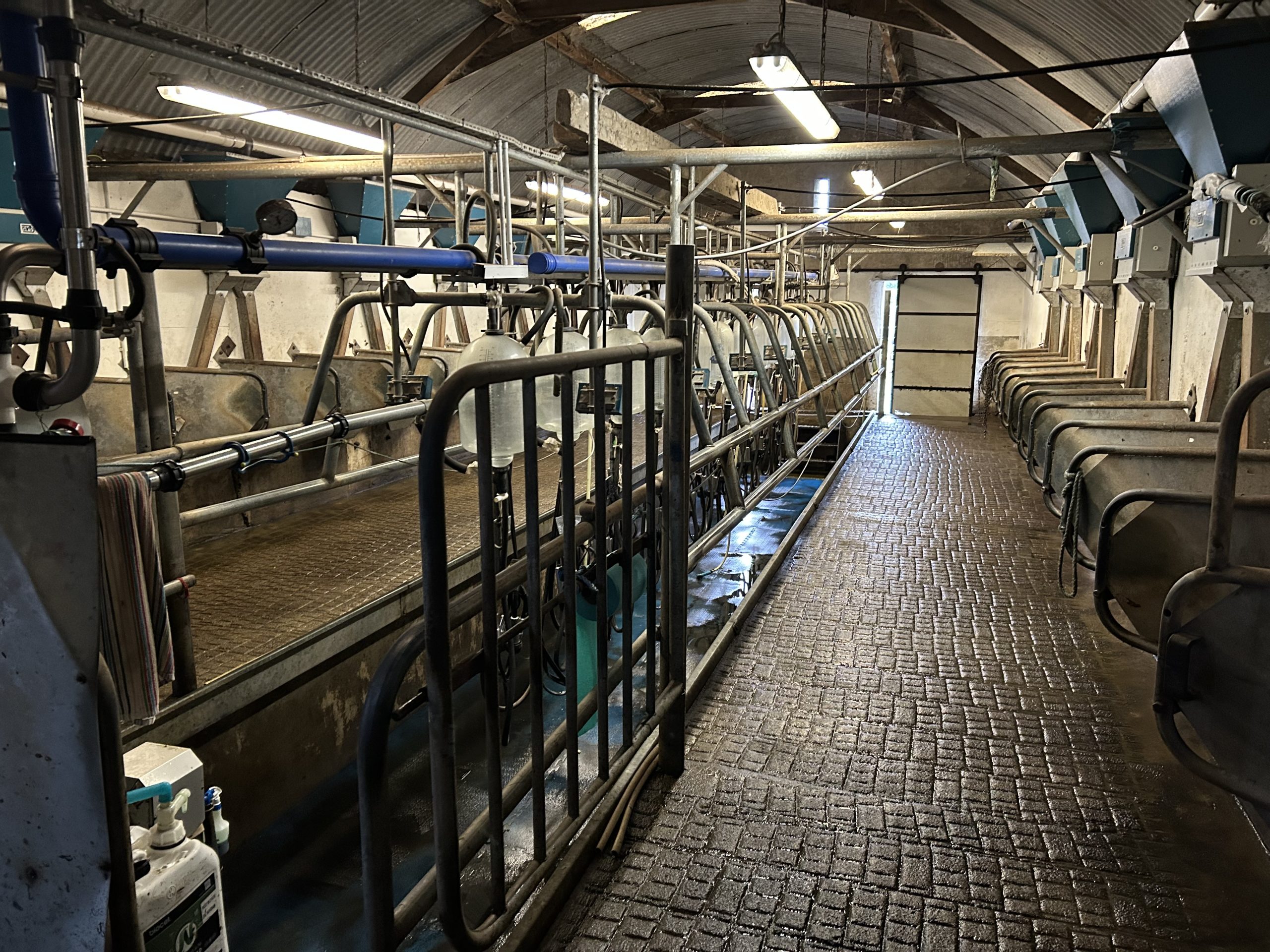
There was also a number of conventional straws used and anything not fit for Friesian AI based on milk recording, feet and legs, bad udders, and cell counts were served with an Angus or Hereford straw, with some older cows receiving a Belgian Blue straw.
The heifers were synchronised this year with 10 sexed semen straws use and another 10 conventional straws used on the 20 replacement heifers.
Speaking about the addition of the bolus heat detection, Sam said: "It takes the work out of breeding, you might miss a cow before and everyone misses a cow."
However, he said with the bolus, every cow in heat is detected and the timing of AI is precise.
Sam also talks about the future plans for the farm, future investments, autumn calving and preparing for drying-off, and grassland management in the podcast.

